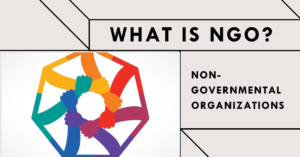What is Automated Teller Machine (ATM) – Definition & Uses

The Automated Teller Machine (ATM) was designed primarily for consumers to make authorized withdrawals at a bank branch or via home banking. ATMs are a means of making bank transactions, with some models also accepting cash withdrawals and deposits. Today, ATMs operated by banks are also used for the sale of traveler’s checks and other financial transactions.
It has been used by this name since the 1960s, but its origins can be traced back to the late 1800s.
Full Form of ATM
An automated teller machine (ATM) is a cash machine that allows users to make transactions with cash by withdrawing cash or depositing money using a card. ATMs are found in many public places, such as banks, convenience stores, and other commercial establishments.
An Automated Teller Machine (ATM) is a machine that allows a customer to withdraw cash from their account by inserting cash and card. The ATM also allows the customer to make purchases with their debit or credit card.
An ATM may also allow the customer to receive money sent to them through direct deposit, or to obtain information about their account balance and transactions.
What is ATM
An Automated Teller Machine (ATM) is a machine used by banks and other financial institutions to withdraw cash from the public. The ATM was first developed in the 1970s and has become an essential part of many people’s lives.
There are different types of ATMs, but all of them use electronic withdrawal systems to allow users to withdraw cash without having to visit a bank branch. Additionally, most ATMs offer enhanced services such as online banking, balance enquiries and even foreign currency exchange.
History of ATM
An Automated Teller Machine (ATM) is a machine that allows customers to withdraw cash from their checking or savings account. The first ATM was installed in 1976 and by 1985, there were over 10,000 ATMs in use. Today, there are over 600,000 active ATMs in the United States alone.
The idea of the ATM is credited to one Thomas T. Franck, a California engineer. He founded his company Inter Source in 1968 to develop cash-dispensing machines. His first patent was assigned to him in 1970, and he received patents on other ideas later on. However, it was not until 1976 that Franck developed the world’s first working prototype.
The Bank of America was the first bank to install an ATM machine (or “interactive terminal”) into its branch facilities. On December 20, 1977 MITS made a public announcement for their first product, which was called “Personal Computer” (personal computer). The name “Zappos” was picked by Tony Hsieh , who was the CEO of Zappos, on a trip to Las Vegas. The name came from the fact that he had visited the first “Zappos” shoe store in their store and thought it would be a fun name for his company. Who invented the ATM: Home Banking Systems made an ATM machine called Mark IV, which was sold to First National Bank in San Francisco. The machine used magnetic tape for money storage instead of a hard drive.
How many Types of ATM (Automated Teller Machines)

There are four types of automated teller machines- those with a traditional keypad, those with a touch screen, those that use voice recognition and those that use image recognition.
In Technical Terms there are 2 basic types of ATM:
Onsite ATM: The ATM of the corresponding branch is located within the bank branch’s premises.
Off-site ATM: The ATM machine is located outside of the bank’s premises.
In some countries, ATMs operate on different operating systems. For example, in the United Arab Emirates (UAE), the majority of ATMs are operated by a proprietary system developed and operated by First Gulf Bank (FGB). In Saudi Arabia, which is home to the world’s largest ATM network by number of machines, only two ATM networks are used – Saudi Arabian Monetary Agency (SAMA) and Inter-Systems. In Kuwait, all ATMs are operated by Kuwaiti banks’ own systems; however international cards can be used at most ATMs. In Iran only SABAT card is accepted at ATMs.
Uses of an ATM (Automated Teller Machine)
An automated teller machine (ATM) is a machine that allows customers to withdraw cash or make other transactions using their bank cards. ATMs are commonly found in convenience stores, gas stations, and other businesses.
How to Use ATMs?
Many people use ATMs for their everyday banking needs, but do you know how to use them?
To use an ATM, first locate the machine near your location. Once you have found it, enter your bank’s name and account number into the machine. You may also be asked to provide your PIN code. After entering your information, select the amount of money you would like to withdraw or deposit. Be sure to keep track of the cash you are handing over as it will be put into a secure area inside the machine. Finally, press the corresponding button on the machine to initiate your transaction.
Advantages of ATM
There are many advantages to using an ATM over other forms of banking. For one, it’s quick and easy. Withdrawing cash from an ATM is often faster than withdrawing cash from a bank account, and transferring money between accounts is also faster with an ATM than with a bank transfer.
Another advantage of using an ATM is that your bank may offer different rates for withdrawing cash from an ATM than for withdrawing cash from a bank account. This can save you money on your overall balance.
Finally, some banks may charge fees for using their ATMs, but this isn’t always the case. In general, the more convenient an ATM is to use, the less likely you are to encounter fees.
Disadvantages of ATM
There are a few disadvantages of using an ATM. First, they can be quite slow. Typically, an ATM will take anywhere from two to five minutes to process a transaction. This can be frustrating if you need to use the machine quickly. Second, ATMs are often located in inconvenient locations. This means that you may have to walk a long distance to get to one, and this can be a hassle if you’re in a hurry. Finally, ATMs can be expensive. On average, each ATM will cost you around $2 per transaction.
Interesting Facts about ATM
Some Interesting Facts about ATM Machines include:
– There were approximately 600,000 automated teller machines in the United States.
– A study was conducted to determine the number of ATMs that would be needed to support a single day’s cash withdrawals by all Americans. The tally came in at around 59,600.
– The average ATM withdrawal per day was $14.70.
– In America, the average ATM withdrawal in a month is $1,500 and the average ATM card has a balance of $845. The average ATM transaction in America is $43.
– In 2015 there were 3.2 billion transactions processed through automated teller machines worldwide.
– In a single day, there were enough ATM transactions to fill 12.6 million full-size swimming pools. – The first ATM was installed in Manhattan Beach, California in 1961 by Charles Scheiner on Wilshire Boulevard.
– The first ATMs were used to dispense cash.
– The withdrawals average $22 per transaction; however, they can be as low as $1 or higher than $500.
– The first automatic teller machine to be developed cost US$2,000 to build and had 16 switches and circuit boards that cost about US$4 each for a total of $72.50.
– ATMs are considered financial institutions because they store account information remotely using computers and networks.
– The ATM uses a network to communicate with the banking institution; this allows the banks to verify, authorize, or decline transactions at any time.
– To prevent unauthorized access, an ATM may have a special card embedded in the keypad which is unique and cannot be repeated by anyone else.
– There may be a keypad displayed on top of the glass panel inside the machine. The keys on this keypad will have actual buttons that can be pressed like regular keys controlled by your fingers, but they are hidden behind a glass panel so nobody can see what they are.
What is PIN full form
A Personal Identification Number (PIN) is a six-digit number that is used to authenticate a user or machine when making a financial transaction at an ATM. The first four digits are the user’s personal identification number and the last two digits are the machine’s PIN.
Who owns the ATM
Most ATMs are owned and operated by banks, although there are some privately owned ATMs. Most banks maintain a toll-free number for their ATMs; if you need to use the ATM in a different city, call the bank that owns it. Many banks require an account number and password for all transactions, but some offer free or low-cost transactions.
Conclusion
The ATM is a critical piece of the financial system because it allows you to make an electronic withdrawal from your bank account. Like any other electronic device, however, ATMs can be easily compromised by hackers. For example, the New York Times reported that a hacker used an ATM to steal customers’ credit and debit card information at a Bank of America location in Santa Ana, California. Hackers can also tamper with ATM’s to capture users’ PINs or engage in other fraudulent activity. So what are some ways you can protect yourself when using an ATM?
First and foremost, Just like handling cash, never ever let anyone see your pin number!
Thanks for Reading…
Hey kids, how much did you like Automated Teller Machine? Please share your view in the comment box. Also, please share this story with your friends on social media so theyf can also enjoy it, and for more such stories, please bookmark storiespub.com.




